Brain cancer is a serious and life-threatening condition, which requires immediate medical attention. The cancerous mass in the brain can affect your life negatively. It can affect your physical function and mental skills. Based on the area of development, you can experience specific signs. For example, if cancer develops in the frontal lobe, then you can see behavioral changes. Cancer affecting the parietal lobe can affect your movements and speech adversely. Read ahead to know more details about the dangerous disease and how to manage it.
What Is Brain Cancer?
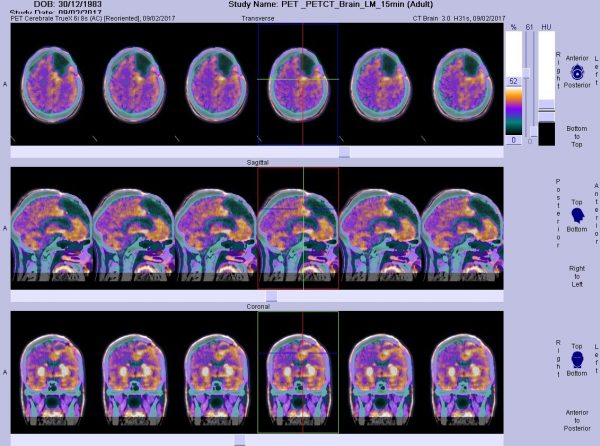
Cancerous presence in your brain refers to the overgrowth of cells, which leads to the development of masses called tumors. The cancerous (malignant) tumors in the brain can grow quickly. So, it can affect the normal functioning of the brain. You can experience changes in the working of your body. Without proper treatment, you can face the risk of death. Primary brain cancer is a rare phenomenon. In most cases, you can develop cancer in the brain due to metastasis. Cancer begins in another part of the body and spreads to your brain.
Symptoms Of Brain Cancer
The symptoms of cancerous presence in your brain can trigger several symptoms. But, the signs and symptoms can depend on the size as well as the location of the tumor. So, consult your doctor as early as possible when you experience the following signs:
- Nausea
- Headaches (It becomes worse in the morning)
- Vomiting
- Trouble balancing
- A lack of coordination
- Difficulty walking properly
- Memory lapses
- Difficulty thinking
- Personality changes
- Speech problems
- Vision problems
- Muscle jerking
- Abnormal eye movements
- Muscle twitching
- Passing out without explanation or syncope
- Drowsiness
- Numbness in arms and legs (or tingling sensation in your limbs)
- Seizures
You can experience these symptoms with less serious problems. So, you never have to panic when you observe such signs. It is better to see a doctor and evaluate the signs. The detailed investigation can reveal the exact problem triggering the signs. But, never overlook the symptoms. It can only make the existing condition worse. Many people ignore the warning signs of cancer in the brain. With early medical help, you can avoid the problem from escalating and causing irreversible damage.
Causes Of Brain Cancer
The exact reason for developing cancerous cells in your brain is a mystery. But, the change in your DNA can result in the condition. In normal cases, human cells grow and function based on the DNA of the person. DNA contains information in each cell. So, the changes happening in the DNA of the inside cells can result in the disease. DNA is the chemical composition, making the human gene. It also controls the functions of human cells.
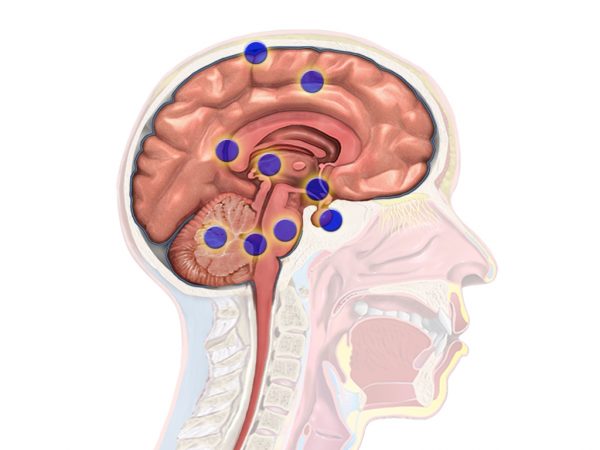
While some genes have the control of cell growth, the division into new cells, and cell death, other genes can keep the division of cells under control or determine the right time of cell death. The genes that help in growth, division, and ability to stay alive are known as oncogenes. Tumor suppressor genes keep the cells under control. Cancer develops when the DNA changes turn on your oncogenes. It also occurs when the DNA turns off the tumor suppressor genes. Certain risk factors make you susceptible to the condition.
Inherited Gene Changes
You can inherit the gene changes and increase your risk of brain cancer. So, people who suffer from rare inherited disorders can also develop cancer in the brain. The affected people experience changes in oncogenes genes or tumor suppressor genes (like TP53). Therefore, it makes them vulnerable to other diseases like cancer.
Acquired Gene Changes
You can acquire the changes in your lifetime. It occurs due to long-term exposure to chemicals or smoke, which can alter the working of genes in your body.
Risk Factors Associated With Brain Cancer
While you cannot pinpoint the exact reason for developing a cancerous presence in the brain, some factors make you susceptible to the disease compared to others. The factor influencing the development of cancer are:
Family History
People with a family history of the disease need to maintain caution. If you have a family relative suffering from cancer in the brain, you are at risk of developing the problem.
Cancer In Other Parts
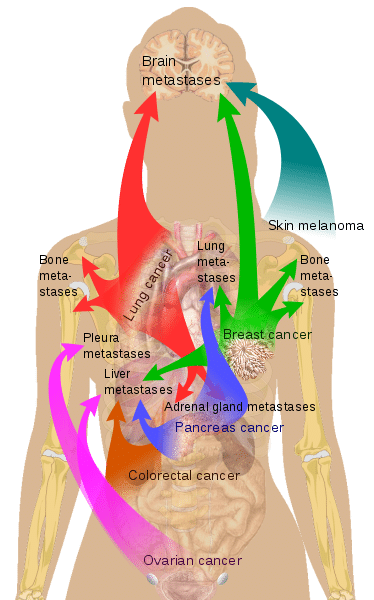
Developing cancer in other parts of the body can increase your chances of developing secondary cancer in the brain. Cancer that can spread or metastasize to the brain region include:
- Kidney Cancer
- Lung Cancer
- Bladder Cancer
- Breast Cancer
- Melanoma (A type of skin cancer)
Other Factors
Some other factors can also put you at a high risk of developing cancerous mass in the brain. The factors include:
- Long-term exposure to high doses of ionizing radiation
- Increased age
- Exposing yourself to harmful fertilizer, herbicides, and pesticides
- Long-term smoking
- Working with elements increases the risk of cancer (Petroleum, lead, some textiles, and plastic)
- Suffering from mononucleosis or have an Epstein-Barr virus infection
Types Of Brain Cancer
Usually, cancer is named based on where it develops first. Brain cancer begins in your brain. It is referred to as primary brain cancer. It is because you can develop cancer in other areas of the body that can spread to the brain. Such a cancerous presence in your brain is known as metastatic brain cancer. In most cases, the cancerous presence in the brain is not primary. It develops due to the spread of cancer from other parts of the body. You can classify the tumor developing in the brain into different types and grade it. It is classified based on its location and graded depending on the aggressive nature of its growth. The grades range from one to four. The grade 4 tumor refers to the fastest-growing, aggressive cancer.
In people suffering from cancerous tumors in the brain, the growth rate and the ability to trigger symptoms vary. The aggressive and fast-growing tumors appear abnormal when viewed under the microscope. The grading system to classify the tumors in the following grades:
Grade I
It refers to the tumor with no cancerous cells. The cells appear like normal brain cells. The growth of such cells is slow.
Grade II
It is the grade provided to malignant tumors in the brain. The cells appear less normal compared to Grade I tumors under the microscope.
Grade III
The cancerous tumor in the brain has abnormal-looking cells. These cells appear different compared to normal cells. The abnormal cells grow actively. You can term the abnormal appearing cells as anaplastic.
Grade IV
It is the most aggressive form of cancerous presence in the brain. The malignant tissue has a very fast growth rate and appears most abnormal compared to others.
You will feel astonished to find that there are more than 120 types of brain tumors. So, you have no standard available to name them. The diverse types and subtypes make it difficult to name them properly. So, different doctors tend to use different names for the same type of tumor.
Diagnosing Brain Cancer
You may not find about the cancerous presence in your brain during a routine checkup. It is because routine brain screening is not performed. You mostly tend to see a doctor when you experience symptoms. When you consult a doctor to detect the underlying problem causing the symptoms, you have to undergo several diagnostic tests. It helps determine the presence of cancerous tumors in your brain. Your doctor suggests the following diagnostic tests to conclusively determine the underlying problem:
Imaging Tests
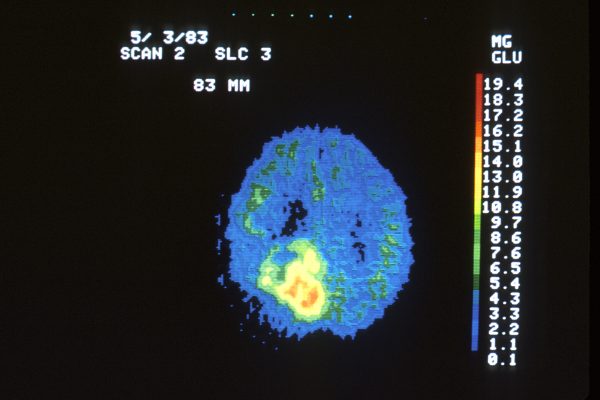
The imaging tests can offer comprehensive details about the structure of the brain and its abnormalities. Using sophisticated imaging tests, it is possible to get a clear picture of the brain and locate the tumor. The following imaging tests help the doctor detect the presence of a tumor in your brain:
- CT Scans
- MRI
- PET (Positron Emission Tomography)
Neurological Examination
The tests aid the doctor in determining the ways the tumor affects your brain and its function. The doctor checks your hearing, vision, alertness, coordination, muscle strength, and reflexes. Your doctor also performs eye tests to detect swelling. The presence of a tumor can press on the nerve connecting the brain and your eye. So, the test can shed light on the impact of the tumor on your life.
Lumbar Puncture

It is the procedure used to take a sample of CSF (cerebrospinal fluid) for testing. It is the fluid surrounding the brain and spinal cord. The sample sent to the lab for testing can detect the presence of malignant cells.
Brain Biopsy
It is performed by a neurosurgeon. The procedure extracts a sample tissue from the tumor in your brain and sent to a lab for diagnostic testing. It is tested to detect malignancy of the tumor and grade it based on its aggressiveness. You have two options to remove the abnormal sample for testing under the microscope:
Open Biopsy
During the procedure, the neurosurgeon makes an incision in the skull and removes the tissue near the brain surface. The tissue sample is sent to the lab to determine the type of brain lesion. A pathologist examines it under the microscope to detect the type of the disease.
Needle Biopsy
It is suggested for tumors that are inaccessible using the open biopsy. The needle uses the stereotactic frame to guide into the specific area of the tumor or lesion. So, it can extract the sample from deeper in the brain.
Treatment For Brain Cancer
Brain cancer requires immediate medical treatment for managing the condition effectively. You have different treatments available for the cancerous presence in the brain. But, the treatment for primary cancer originating in the brain differs from the treatment for cancers due to metastasis. Metastatic cancer treatment usually focuses on the original cancer site. You can receive the one or more treatment based on the type, size, as well as the location of the cancer cells in your brain. The treatment also depends on your age and general health. The different treatment to manage the cancer cells in the brain are:
Surgery
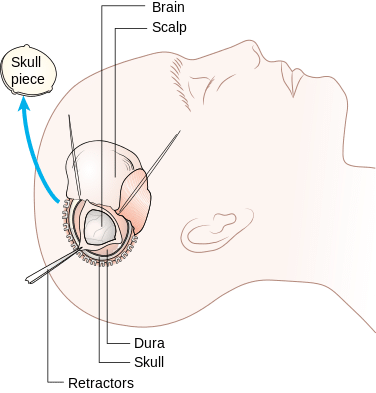
Invasive surgery is the most common treatment option to remove the cancerous presence in your brain. In most of the cases, the neurosurgeons make an opening in the skull to remove the tumor completely. The surgery to remove the cancerous tissue is called a craniotomy. In some cases, the tumor develops in a sensitive or inaccessible area of the brain. Removing the tumor completely from the sensitive area without damaging vital brain tissue is not possible. So, the doctor removes the tumor as much as possible. The partial removal of the cancerous tumor can reduce the pressure on the brain. Tumors that are difficult to operate completely are referred to as inoperable. The inoperable tumors are treated by other methods like radiation and chemotherapy.
Radiation Therapy
Radiation therapy is effective for inoperable cancerous cells in the brain. It uses high-powered rays to damage the cancerous cells. It also stops the growth of the cancer cells. Radiotherapy is also favored when the killer cells remain in the brain after surgery. It is an effective treatment option to eliminate cancerous brain tumors in sensitive areas of the brain. Your doctor can provide radiation therapy in two ways.
External Radiation Therapy
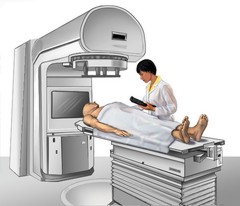
The external radiation therapy is provided by a large machine. You need to undergo external radiation for five days a week. The treatment can extend for a few weeks. Your treatment schedule depends on the size and type of tumor you develop. The schedules are also decided based on your age. Giving you the total radiation over a few weeks can protect your healthy tissue. So, the radiation cause damage to the cancerous cells and protects the healthy tissue surrounding the cancerous tumor.
Internal Radiation Therapy
You can also receive radiation therapy by directly placing the radioactive material in your tumor. The doctors can also use implant radiation therapy to destroy the cancerous cells. Depending on the radioactive material used, the implants can remain in the brain for a short period or permanently. Implants tend to lose radioactivity each day. So, you need to remain in the hospital for the days when the radiation remains most active.
Chemotherapy
Chemotherapy uses a single drug or combination of drugs to eliminate the cancer cells. The drugs are mostly injected into your muscle or blood vessel or given orally. When you undergo intrathecal chemotherapy, the doctor injects the drug into your cerebrospinal fluid to destroy the cancer cells.

You have to undergo chemotherapy in cycles. It is to avoid eliminating the healthy cells in your brain cells. Each cycle of chemotherapy is followers by a recovery period. Then, the next cycle of treatment is completed, followed by a recovery period and so on. You never have to stay in the hospital for the treatment. You can receive chemotherapy in the doctor’s office or clinic. But, depending on the chemotherapy drugs used and the mode of providing the drugs requires a hospital stay. Chemotherapy can affect your health. So, you need to stay in the hospital for a short period.
Biologic Drugs
It is the drugs that can boost the natural defense system of your body against diseases like cancer. The biologic drugs can restore your immune system and offer relief. Some biologic drugs can stop the blood vessels, which helps with the growth of the cancerous tumors. The blood vessels supply the growth of cancer cells in the brain. So, blocking blood vessels can aid in stopping tumor growth.
Other Medications
When you undergo therapies to treat cancerous presence in the brain, it can cause side effects. So, you need medication to ease the side effects of cancer treatments.
Clinical Trials
For advanced cases of cancerous presence in the brain, the conventional treatment may not offer any relief. It may not respond to the usual treatment. So, you can undergo clinical train therapies as well as medications. But, you need to know that the treatment options are in the testing phase. Therefore, you may not get guaranteed results.
Rehabilitation
Cancer affecting the brain can cause damage to important tissues in your brain. So, you can lose your ability to walk, talk or perform other normal activities. Therefore, you have to undergo rehabilitation. The following activities can help you relearn the activities and try to resume your normal life before the disease:
- Physical Therapy
- Occupational Therapy
Alternative Therapies
While you have no conclusive evidence to support the effectiveness of alternative therapies in treating cancerous presence in your brain. But, you can combine the alternative therapies and lifestyle changes with your medications offered by the doctor to get relief. The combination of conventional treatment with a healthy diet and supplements (vitamins and minerals) can restore the nutrients lost during the cancer treatment. So, you can feel better. You can also try acupuncture and herbal supplements to reduce the pain and increase the effectiveness of conventional therapy. But, talk to your doctor before taking any supplements or trying alternative therapy as it can interfere with your medications.
Reducing The Risk of Brain Cancer
You cannot prevent brain cancer. But, you can adopt several steps in your life to reduce the risk. So, you can minimize the possibility of developing a cancerous presence in the brain are:
- Try to avoid exposure to harmful insecticides and pesticides.
- You need to avoid smoking as tobacco products can cause adverse effects on your health.
- You need to avoid unnecessary exposure to radiation as it increases the risk of developing cancer.
Conclusion
You can manage the primary brain tumors with proper medical care and attention. The outlook mostly depends on the type, size, and location of the cancerous tumor. Unfortunately, the cancerous presence in the brain can have fatal complications. So, it has low survival rates. With early medical intervention, you can increase the quality and quantity of life. You can opt for treatment plans that can improve your quality of life for a short period. Without proper treatment, the cancerous presence in the brain can result in death within a short time. The aggressive form of cancer requires treatment from the best specialists. So, you need to see a specialist to get a proper diagnosis and get the ideal treatment. You have to discuss the prognosis in detail before deciding on the treatment plans. So, make a sound decision based on the information offered by your caregivers.
View Article Sources
